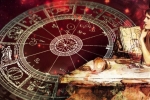The idea underlying astrology is simple - the position of the planets in the sky determines the trends in the development of events on earth. Why is this so?
Modern official physics is not able to explain this. However, Professor Kozyrev’s theory of time, information theory and discrete mathematics combined give the keys to understanding ancient knowledge and make it understandable and even obvious from the point of view of modern science. But sometimes all this is difficult to understand for the average layman. In this regard, we bring to your attention:
HELP UNDERSTANDING HOROSCOPES from the Institute of Astrology, which compiled the STAR WAY Program https://777sw.com/ in the form of BASIC ASTROLOGICAL CONCEPTS
ASPECT - the ratio between the planets relative to the Earth (in degrees). It happens harmonious, inharmonious. planets establish cyclical relationships with each other. The phases of these relationships are called “aspects.” Aspects show how different planets connect and interact within the individual.
ASTROLOGY - the science of the influence of celestial bodies on each other, on Earth, on earth processes and people.
ASTROLOGICAL MAP - a drawing showing the relative position of the planets, Zodiac Signs and Houses in the horoscope of a particular person.
Ascendant - the extreme eastern point from which the countdown in the astrological chart begins. Indicates the main individual personality traits (in conjunction with the properties of that Zodiac Sign, in which the Sun was at the time of birth).
HARMONIOUS ASPECT (30 °, 60 °, 120 °) - the relative position of the planets, in which the planets most positively show their basic properties.
HOROSCOPE - display of the vault of heaven at a specific point in time in a particular place on Earth. On its basis, characteristics, capabilities, relationships and various events in the life of a particular person are determined.
HOUSE - one of the parts of the astrological chart, responsible for a certain area of human life. There are 12 HOUSES on the map, covering all spheres of human life.
I house - personality and appearance, self-realization.
II house - money and property, finance, property.
III house - intellectual abilities, study, information, short trips, close environment - brothers sisters. Aunts, uncles, cousins, cousins.
IV house - roots, family, home.
V house - love, children, creativity, leisure, games and entertainment, excitement, hobby.
VI house - health, work, service.
VII house - partners in marriage, love, business; litigation and clients.
VIII house - death; extreme situations, real estate, inheritance, other people's money; sex.
IX house - higher knowledge, religious and philosophical views, travel
X house - career, position, reputation, own business
XI house - friends, social life, hopes, dreams.
XII house - enemies, secrets, subconscious, isolation; secret knowledge, restrictions on freedom.
SIGN OF THE ZODIAC is cosmic energy that has certain properties. Each of the 12 Signs is an energy peculiar only to him, and this distinguishes him from others.
ZODIAC - a sequential arrangement of 12 Signs in a circle, starting with Aries and ending with Pisces.
NATAL CHART - an astrological chart of a specific person, showing the general picture of his fate, depending on the date, time and coordinates of the place of birth. It is built in accordance with the location of the planets in the Cosmos at the time a person was born.
NON-HARMONIOUS ASPECT (45 °, 90 °, 180 °) - the relative position of the planets, in which the planets show their most negative qualities.
OPPOSITION - one of the inharmonious aspects between the planets, equal to 180 °. It creates contradictions and does not allow planets to express their energy easily and positively. It gives an inability to compromise and pushes into a conflict that is almost impossible to resolve.
FALL - the finding of a planet in the Sign opposite to the one it controls. This weakens its basic properties.
PLANETS - The planets in astrology are considered to be ten celestial bodies: the Sun, the Moon, Mercury, Venus, Mars, Jupiter, Saturn, Uranus, Neptune and Pluto.
The Sun and the Moon are sometimes called luminaries when they want to distinguish them from other planets.
Planets are divided into favorable, unfavorable and neutral.
The Sun, Jupiter, Venus, Neptune are considered favorable.
The Moon, Saturn, Mars, Pluto are considered unfavorable.
Neutral are Mercury, Uranus.
Basic concepts of astrology
2020.01.03.






